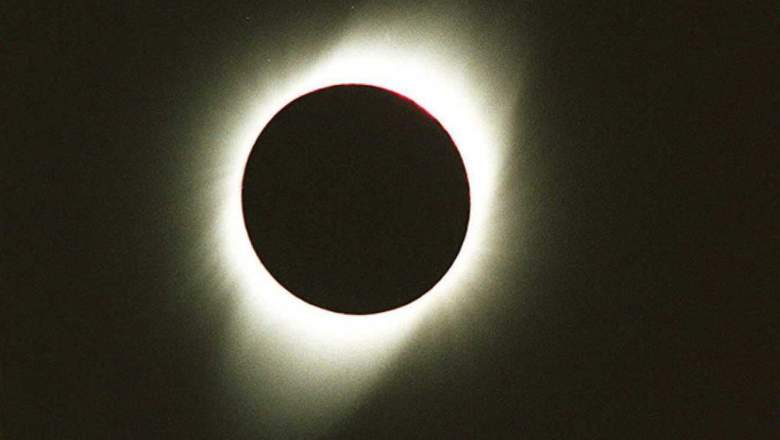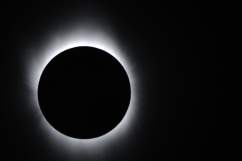
Getty The view of a total solar eclipse in 1995.
The Great American Solar Eclipse of 2017 will truly be a once-in-a-lifetime event for anyone who doesn’t travel the world to see eclipses. A total solar eclipse, which happens when the moon covers the sun completely during its orbit of the Earth, is rare. The August 21, 2017 total solar eclipse is the first time a total solar eclipse has been visible for any part of the contiguous U.S. since 1979, 38 years ago. It’s the first eclipse of any kind visible in the U.S. since the 2012 annular solar eclipse.
The last solar eclipse of any kind visible in the U.S. was on May 20, 2012. This was an annular eclipse, meaning that the moon looked smaller than the sun, leaving parts of the star visible. The eclipse makes the sun look like an “annulus” or “ring.” The path of the eclipse began in China and ended in Texas, going over the Southwest.
There were two more annular eclipses visible in the U.S. on January 4, 1992 and May 10, 1994.
The previous two total solar eclipses visible over U.S. territory were in 1990 and 1991. The 1991 total solar eclipse was only visible in Hawaii. But eclipse chasers who live in the contiguous U.S. could go to southern Mexico to see it. That total solar eclipse was notable because it lasted for 6 minutes, 53 seconds of totality. There won’t be another long eclipse like that until 2132.
The path of totality for the July 22, 1990 solar eclipse stretched from Finland to the middle of the Pacific Ocean. But the path did cover some of Alaska’s outer islands.
The last time the path of totality for a total solar eclipse covered any part of the contiguous U.S. was back on February 26, 1979. The path went over the Northwest, over Washington, Oregon, Idaho, Montana and North Dakota. The path turned north, heading through Canada and ending in Greenland.
Although there have been total solar eclipses that have included parts of the contiguous U.S., there hasn’t been any like the one we’ll see on August 21 since 1918. On June 8, 1918, the path of totality stretched from Washington to Florida, almost mirroring the path of totality for this year’s solar eclipse. The path continued off the coast, ending near Bermuda.
The 1918 drew as much attention as today’s has. Newspapers, even those in cities not in the path of totality, dedicated front-page coverage to it. The Kansas City Star was just as dedicated to making sure its readers were aware of the dangers of staring at the eclipse as the media is today.
“In view of the fact there will be an eclipse of the sun this afternoon, all observers of that phenomenon should be urgently warned against looking at the sun without smoked glasses or developed photographic film, even when only a small rim of the sun is visible,” the paper warned, noting of cases of “eclipse blindness” occurring after the 1912 eclipse in Europe. Thankfully today, we have easy ways to make solar eclipse glasses at home.
